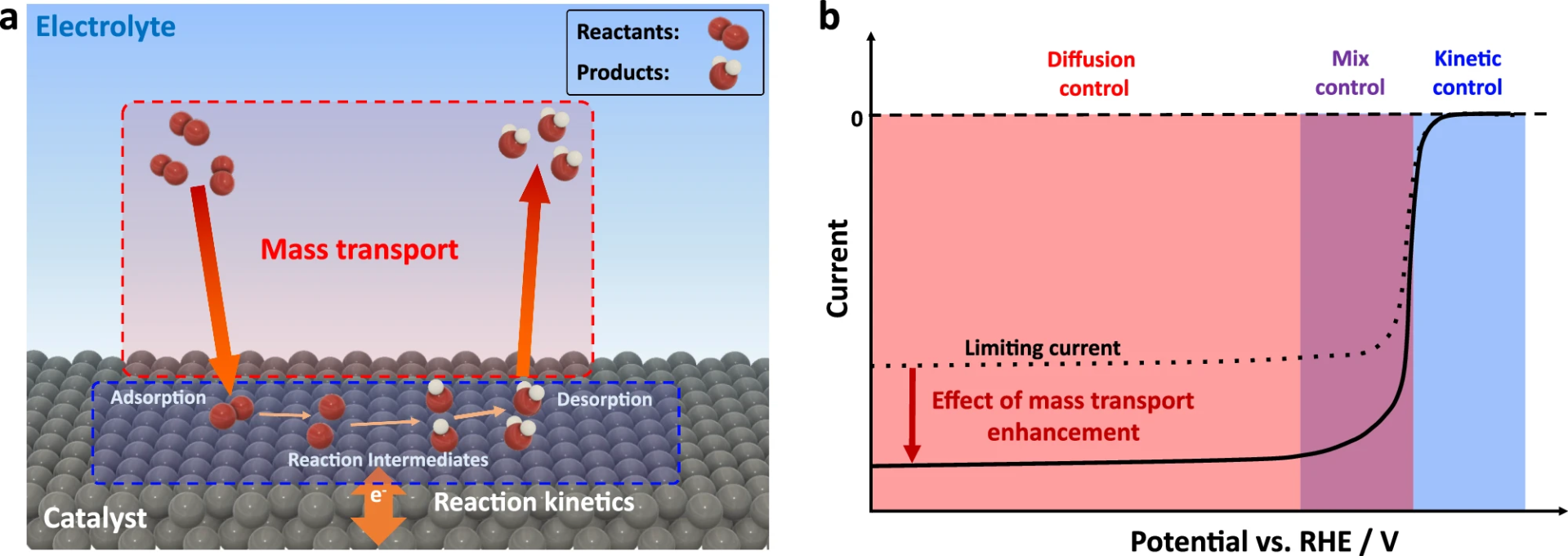
In the never-ending pursuit of sustainable energy, scientists are leaving no stone unturned. One such stone is electrocatalysis, a pivotal process in converting chemical energy into electrical energy and vice versa. This process is already a cornerstone of various green-energy technologies.
Electrocatalysis
Electrocatalysis accelerates electrochemical reactions with the help of catalysts, substances that boost reaction rates without being consumed themselves. This process is integral to devices like fuel cells and electrolyzers, where it facilitates the efficient conversion of fuels such as hydrogen and oxygen into electricity, or water into hydrogen and oxygen, respectively. This creates a cycle of clean energy.
However, the efficiency of traditional electrocatalysis methods often leaves much to be desired. These methods struggle to maximize the transport of reactants to the catalyst’s surface, a crucial step in energy conversion. This inefficiency hampers the overall reaction and slows our progress towards clean energy solutions.

But now, a team of scientists led by Magali Lingenfelder at EPFL has developed a groundbreaking approach to track the fundamental processes that enhance the efficiency of clean fuel production. Their work, published in Nature Communications, explores the promising intersection of magnetic fields and electrocatalysis, paving the way for more efficient and environmentally friendly fuel production technologies.
Magnetic Whirlpools to the Rescue
The study revealed that when catalysts are surrounded by magnetic fields, they create Lorentz forces—the forces that magnetic fields exert on moving electric charges. These forces induce swirling motions that enhance the movement of reactants and products at the catalyst surface, ensuring a more consistent and rapid reaction. This also overcomes the limitations posed by reactant scarcity, a common obstacle in reactions like the oxygen reduction reaction (ORR), which is critical for fuel cells.
To achieve this, the researchers had to construct a tool for observing the movement of ions in real time under a magnetic field, using an advanced magneto-electrochemical setup. For the actual sophisticated setup, Lingenfelder turned to her office neighbor and spintronics expert, Professor Jean-Philippe Ansermet, who had also studied spin effects in electrochemistry.

“We adapted Jean-Philippe’s electromagnet to measure magnetic field effects on key electrocatalytic reactions for green energy,” Lingenfelder says. “Using a creative trick developed by Priscila and Yunchang [the first authors of the study], we were able to track in situ how ions move in the electrolyte under a magnetic field and to provide a solid ground on how to apply magnetic fields to boost electrocatalysis in a reproducible way.”
By applying magnetic fields to non-magnetic electrodes and monitoring reactions, the scientists were able to decouple the different effects and observe how magnetic forces can stir and enhance the movement of reactants around the catalyst. This process, akin to creating miniature whirlpools, significantly improves the efficiency of reactions crucial for green hydrogen production, offering a promising avenue for advancing sustainable energy technologies.
Practicality check: Yes, it works!
So, is this new method practical? In the study, the scientists demonstrated more than a 50% boost in activity for the oxygen reduction reaction induced by magnetic fields on non-magnetic interfaces. This represents a substantial jump in efficiency, but, most importantly, allowed the team to resolve many fundamental controversies in the field by demonstrating the mechanisms and conditions needed for magnetic fields to enhance different electrocatalytic reactions involving gas products or reactants like hydrogen and oxygen.
This study charts the way towards using magnetic fields to improve the efficiency of electrocatalysis, propelling us towards more effective sustainable fuel production. The future of green energy might just be magnetic!












